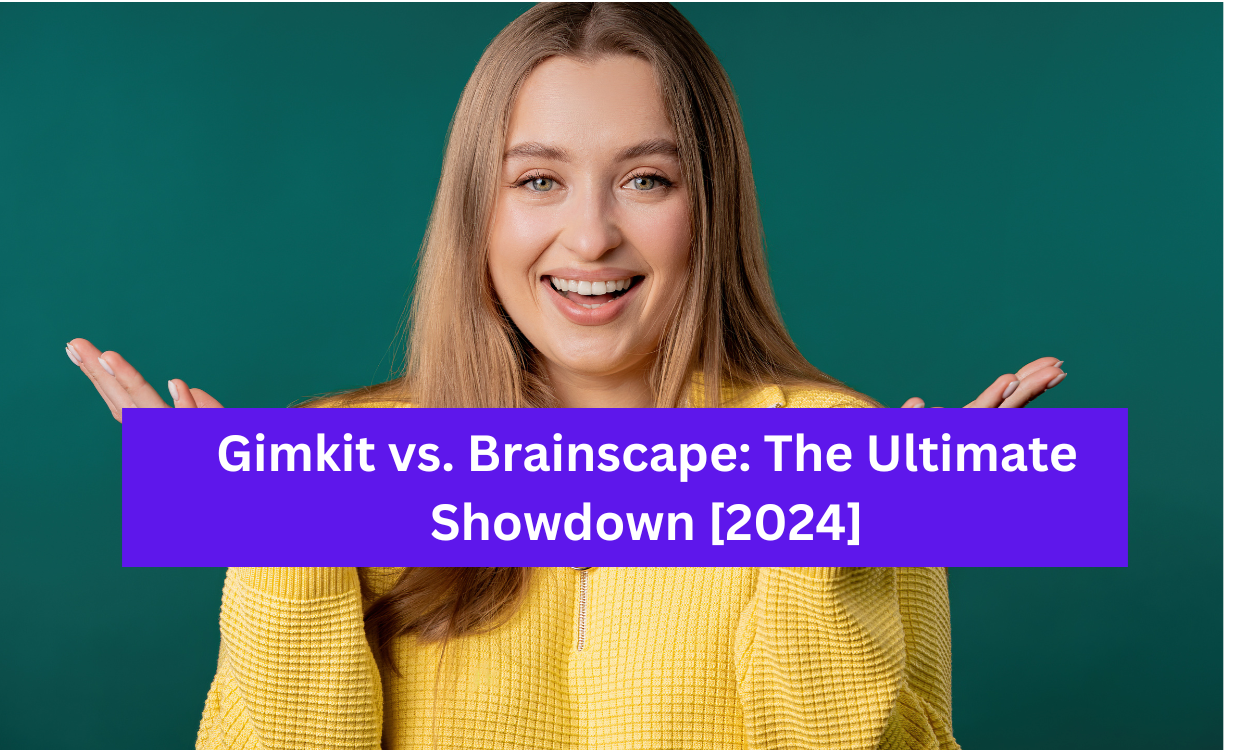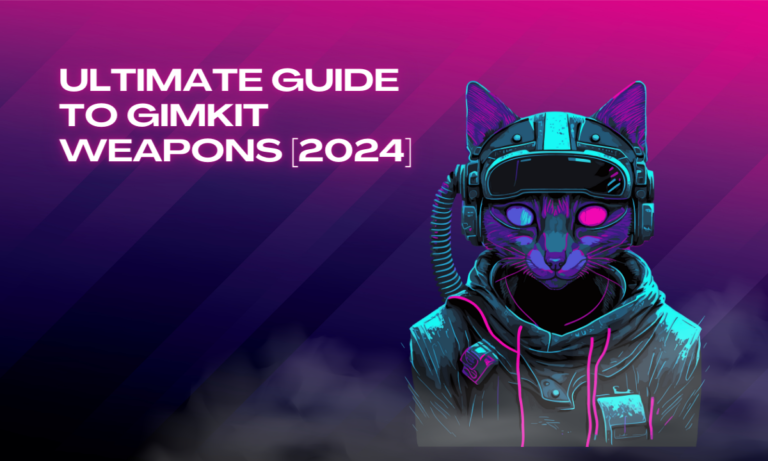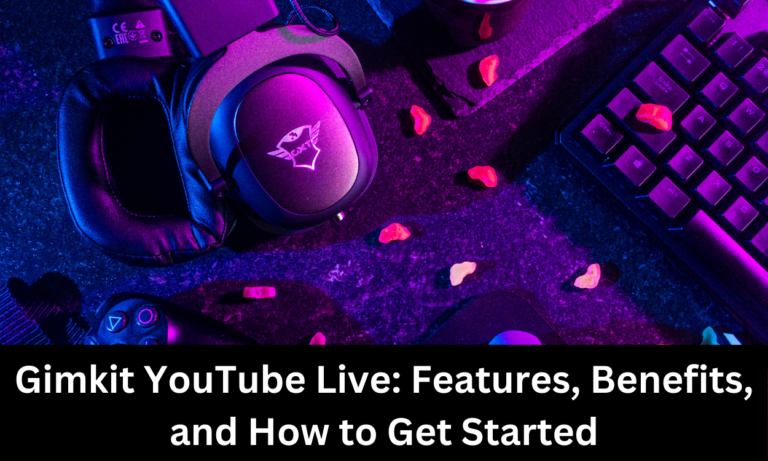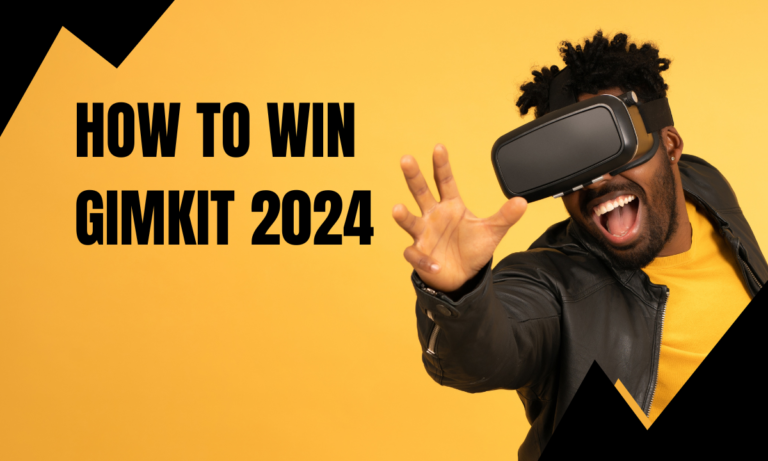Gimkit vs. Brainscape: The Ultimate Showdown [2024]
Gimkit vs. Brainscape: The Ultimate Showdown 2024.In today’s fast-paced digital world, education has undergone a revolutionary transformation. Gone are the days of traditional flashcards and rote memorization. Enter the era of gamified learning platforms and intelligent flashcard systems. Two heavyweights in this arena, Gimkit and Brainscape, have been making waves in the EdTech industry. But which one reigns supreme? In this comprehensive guide, we’ll dive deep into the world of Gimkit and Brainscape, exploring their features, benefits, and how they stack up against each other. Whether you’re a student looking to ace your exams, a teacher seeking innovative ways to engage your class, or a lifelong learner hungry for knowledge, this article will help you make an informed decision about which platform suits your needs best.
Introduction to Gimkit and Brainscape
In the ever-evolving landscape of educational technology, two platforms have emerged as frontrunners in the quest to revolutionize how we learn and retain information: Gimkit and Brainscape. Both offer unique approaches to digital learning, but their methodologies and core philosophies set them apart.
Gimkit, founded in 2017 by high school student Josh Feinsilber, burst onto the scene with its innovative game-based learning platform. It quickly gained traction among students and educators alike for its engaging, competitive format that turns studying into an addictive game.
On the other hand, Brainscape, launched in 2010 by Andrew Cohen, takes a more scientific approach to learning. Rooted in cognitive science principles, Brainscape leverages spaced repetition and active recall to optimize the learning process.
As we delve deeper into each platform, we’ll uncover how these different approaches cater to various learning styles and educational needs. Whether you’re drawn to the excitement of gamified learning or the precision of scientifically-backed methods, this comparison will help you navigate the strengths and potential limitations of both Gimkit and Brainscape.
The Power of Gamification: Gimkit’s Approach
Gimkit has taken the education world by storm with its gamification approach to learning. But what exactly makes it so captivating? Let’s break down the elements that contribute to Gimkit’s engaging user experience:
Dynamic Gameplay
At its core, Gimkit transforms study sessions into interactive games. Students answer questions to earn virtual currency, which they can then use to purchase power-ups and upgrades. This game-like structure taps into the natural human desire for achievement and progression, making the learning process inherently more enjoyable.
Competitive Edge
Gimkit introduces a competitive element to studying. Students can compete against their classmates in real-time, adding an extra layer of excitement and motivation. This friendly competition often drives students to engage more deeply with the material, striving to outperform their peers.
Customizable Games
Teachers have the flexibility to create custom question sets or choose from a vast library of pre-made content. This customization allows educators to tailor the learning experience to their specific curriculum and student needs.
Instant Feedback
One of Gimkit’s strengths is its immediate feedback system. Students know instantly whether their answers are correct, allowing for real-time learning and correction of misconceptions.
Progress Visualization
Gimkit provides visual representations of student progress, both during gameplay and over time. This feature helps students track their improvement and identify areas that need more focus.
Team Mode
In addition to individual play, Gimkit offers team modes that foster collaboration and peer learning. Students can work together to answer questions and strategize, promoting a sense of camaraderie and shared learning goals.
Adaptive Difficulty
As students progress and demonstrate mastery of certain topics, Gimkit can adjust the difficulty of questions. This adaptive approach ensures that learners are always challenged at an appropriate level, preventing boredom and frustration.
The gamification elements of Gimkit serve a dual purpose: they make learning more enjoyable and increase engagement, which in turn can lead to better retention of information. By tapping into the psychology of game design, Gimkit creates an environment where students are intrinsically motivated to continue learning.
However, it’s important to note that while gamification can be highly effective for many learners, it may not suit everyone’s learning style. Some students might find the game elements distracting or prefer a more straightforward approach to studying. This is where platforms like Brainscape come into play, offering a different methodology that we’ll explore in the next section.
Cognitive Science at Work: Brainscape’s Methodology
While Gimkit leans heavily on gamification, Brainscape takes a different approach, grounding its platform in cognitive science principles. Let’s explore the key elements that make Brainscape’s methodology unique and effective:
Spaced Repetition
At the heart of Brainscape’s system is the concept of spaced repetition. This scientifically-proven technique involves reviewing information at gradually increasing intervals. Brainscape’s algorithms determine the optimal time to review each piece of information, ensuring that learners encounter material just as they’re about to forget it. This method maximizes retention while minimizing study time.
Confidence-Based Repetition
Brainscape introduces a novel twist to traditional flashcard systems with its confidence-based repetition. After viewing a card, users rate their confidence in their answer on a scale from 1 to 5. The platform then uses this self-assessment to prioritize future reviews, focusing more on items where confidence is low and spacing out reviews for well-known information.
Active Recall
The platform emphasizes active recall, a learning technique where students actively try to remember information rather than passively reviewing it. This method has been shown to strengthen memory pathways and improve long-term retention.
Metacognition
By asking users to rate their confidence, Brainscape encourages metacognition – the awareness and understanding of one’s own thought processes. This self-reflection helps learners identify areas where they need more study and builds a more accurate sense of their knowledge.
Adaptive Learning
Brainscape’s system adapts to each user’s individual learning pace and strengths. The platform continuously adjusts the presentation of material based on user performance and confidence ratings, creating a personalized learning experience.
Multimedia Integration
While primarily focused on flashcards, Brainscape allows for the integration of various media types, including images and audio. This multi-modal approach caters to different learning styles and can enhance comprehension and retention.
Progress Tracking
Brainscape provides detailed analytics on study sessions, including time spent, cards mastered, and overall progress. This data helps learners stay motivated and allows them to track their improvement over time.
Scientific Backing
One of Brainscape’s strongest selling points is its foundation in cognitive science research. The platform cites numerous studies supporting its methodologies, giving users confidence in the effectiveness of their study time.
Flexibility in Content Creation
Like Gimkit, Brainscape allows users to create their own content or access pre-made decks. This flexibility ensures that learners can study exactly what they need, whether it’s for a specific class or personal interest.
Brainscape’s approach is particularly well-suited for learners who prefer a more structured, scientifically-grounded method of study. It’s especially effective for subjects that require memorization of large amounts of information, such as languages, medical terminology, or historical facts.
However, some learners might find Brainscape’s methodology less engaging than Gimkit’s game-based approach. The platform requires a certain level of self-discipline and motivation, as it lacks the immediate excitement and rewards of a gamified system.
As we continue our comparison, we’ll see how these different approaches – Gimkit’s gamification and Brainscape’s cognitive science-based system – play out in various aspects of the learning experience.
User Experience: Navigating the Platforms
The user experience (UX) of an educational platform can make or break its effectiveness. A well-designed interface can enhance learning, while a confusing or cluttered one can hinder progress. Let’s compare how Gimkit and Brainscape fare in terms of user experience:
Gimkit’s User Interface
Gimkit’s interface is designed with a game-like aesthetic, which immediately sets the tone for an engaging learning experience.
Key Features:
- Colorful and vibrant design that appeals to younger learners
- Intuitive navigation with clear icons and buttons
- Real-time updates during gameplay, enhancing the competitive aspect
- Easy-to-understand progress bars and score displays
- Smooth transitions between questions and game phases
Potential Drawbacks:
- The game elements might be distracting for some learners
- The interface can be busy, which may overwhelm users initially
- Some users might find the constant visual and audio feedback overstimulating
Brainscape’s User Interface
Brainscape opts for a more minimalist and clean design, focusing on functionality and ease of use.
Key Features:
- Simple, distraction-free flashcard interface
- Clear progress indicators and confidence rating system
- Easy navigation between decks and individual cards
- Clean organization of subjects and subtopics
- Mobile-friendly design for on-the-go learning
Potential Drawbacks:
- Some users might find the interface too plain or lacking in visual excitement
- The simplicity might make it feel less engaging for younger learners
- Limited customization options for the interface appearance
Accessibility Considerations
Both platforms have made efforts to ensure their interfaces are accessible to a wide range of users, including those with disabilities. However, the approach differs:
- Gimkit’s colorful interface might pose challenges for users with certain visual impairments, but its audio components can aid those with hearing difficulties.
- Brainscape’s simpler design may be more easily navigable for users with visual impairments, and its text-based nature works well with screen readers.
Learning Curve
The ease with which new users can start using the platform effectively is crucial:
- Gimkit has a steeper initial learning curve due to its game mechanics and various features. However, many users, especially younger ones, find it intuitive once they get started.
- Brainscape’s straightforward flashcard system means most users can start studying almost immediately with minimal instruction.
Customization Options
Both platforms offer ways to tailor the learning experience:
- Gimkit allows teachers and students to customize game settings, question types, and even create entirely new game modes.
- Brainscape focuses on customization of content rather than interface, allowing users to create and organize their own flashcard decks.
Cross-Platform Consistency
In today’s multi-device world, consistency across platforms is crucial:
- Gimkit maintains a fairly consistent experience across web and mobile platforms, with some features optimized for specific devices.
- Brainscape offers a highly consistent experience across web and mobile, with seamless syncing of progress and content.
The user experience of both Gimkit and Brainscape reflects their core philosophies. Gimkit’s interface is designed to excite and engage, mirroring its gamification approach. Brainscape, on the other hand, offers a clean, no-frills experience that aligns with its focus on efficient, science-based learning.
Ultimately, the preferred user experience will depend on individual learning styles and preferences. Some users will thrive in Gimkit’s game-like environment, while others will appreciate Brainscape’s straightforward approach. As we continue our comparison, we’ll see how these design choices influence other aspects of the learning experience on both platforms.
Content Creation and Customization
The ability to create, customize, and share content is a crucial feature for any modern learning platform. Both Gimkit and Brainscape offer tools for content creation, but their approaches differ significantly. Let’s explore how each platform handles this aspect:
Gimkit’s Content Creation
Gimkit’s content creation system is designed to be fun and engaging, much like its learning interface.
Features:
- User-friendly question editor with various question types (multiple choice, true/false, fill-in-the-blank, etc.)
- Option to import questions from spreadsheets or other file formats
- Ability to add images and audio to questions
- Collaborative creation tools for teachers to work together on question sets
- Student-created content options, allowing learners to contribute to the learning material
Customization Options:
- Game mode selection (Classic, Team Mode, Trust No One, etc.)
- Adjustable game settings (time limits, scoring rules, power-up availability)
- Custom themes and backgrounds for games
- Ability to set difficulty levels for questions
Sharing and Discovery:
- Public library of user-created content
- Easy sharing of question sets with other teachers or students
- Integration with Google Classroom for seamless distribution
Brainscape’s Content Creation
Brainscape’s content creation system focuses on efficiency and organization, aligning with its cognitive science-based approach.
Features:
- Simple flashcard creation interface
- Support for text, images, and audio in flashcards
- Hierarchical organization of decks and sub-decks
- Bulk import options for creating large sets of flashcards quickly
- Collaborative deck creation for team projects or class-wide study materials
Customization Options:
- Customizable card formats (question/answer, definition/term, etc.)
- Ability to add tags for easy searching and filtering
- Options to adjust the spaced repetition algorithm for specific decks
- Creation of custom study plans and learning paths
Sharing and Discovery:
- Extensive marketplace of pre-made decks covering various subjects
- Easy sharing of decks with individuals or groups
- Integration with educational institutions for widespread content distribution
Comparison of Content Quality
The quality of user-generated content can vary on both platforms:
- Gimkit’s gamified approach often leads to more creative and engaging question sets, but may sometimes sacrifice depth for entertainment.
- Brainscape’s focus on efficient learning tends to produce more straightforward and comprehensive content, but it might lack the engaging elements found in Gimkit.
Teacher vs. Student Content Creation
Both platforms offer different experiences for teachers and students:
- Gimkit empowers teachers with robust creation tools while also allowing students to contribute, fostering a more collaborative learning environment.
- Brainscape is more teacher-centric in its content creation, although students can create personal decks for their own study.
Content Verification and Moderation
Ensuring the accuracy and appropriateness of user-generated content is crucial:
- Gimkit relies more on teacher oversight and community reporting for content moderation.
- Brainscape has a more structured verification process for publicly shared decks, especially those in its marketplace.
Accessibility in Content Creation
Both platforms have made efforts to make content creation accessible:
- Gimkit’s visual editor is user-friendly but may pose challenges for users with certain disabilities.
- Brainscape’s simpler interface is generally more accessible but may lack some advanced features.
Integration with External Resources
The ability to import and export content is valuable for educators:
- Gimkit allows import from various formats and integration with educational tools like Google Classroom.
- Brainscape offers API access for developers and educators to create custom integrations.
The content creation and customization features of Gimkit and Brainscape reflect their overall philosophies. Gimkit’s system is designed to make content creation as engaging as the learning process itself, encouraging creativity and collaboration. Brainscape, on the other hand, focuses on efficiency and organization, allowing creators to quickly build comprehensive study materials.
Both approaches have their merits, and the choice between them often comes down to the specific needs of the educator or learner. Some may prefer Gimkit’s more interactive and creative tools.
Making the Right Choice: Gimkit or Brainscape?
As we reach the end of our comprehensive comparison between Gimkit and Brainscape, it’s clear that both platforms offer unique and valuable approaches to digital learning. Each has its strengths and potential drawbacks, catering to different learning styles, preferences, and educational needs. Let’s summarize the key points and offer some guidance on choosing between these two powerful learning tools.
Gimkit: The Gamification Powerhouse
Gimkit shines in its ability to transform learning into an engaging, competitive experience. Its strengths include:
- Highly engaging gameplay that motivates students
- Real-time competition that can boost participation
- Versatile game modes for different classroom scenarios
- Creative content creation tools for teachers and students
- Strong appeal to younger learners and game enthusiasts
However, Gimkit’s gamified approach may not suit everyone:
- Some learners might find the game elements distracting
- The platform may be less effective for in-depth, complex subjects
- The initial learning curve can be steeper for some users
Brainscape: The Cognitive Science Approach
Brainscape stands out with its scientifically-backed learning methodology. Its advantages include:
- Efficient learning through spaced repetition and active recall
- Adaptive system that focuses on areas needing improvement
- Clean, distraction-free interface for focused study
- Extensive marketplace of pre-made study materials
- Particularly effective for memorization-heavy subjects
But Brainscape’s approach also has potential limitations:
- Less engaging for learners who thrive on interactive experiences
- Requires more self-discipline and motivation
- May feel repetitive for some users over long study sessions
Making Your Decision
When choosing between Gimkit and Brainscape, consider the following factors:
- Learning Style: Do you or your students prefer game-like experiences or more traditional study methods?
- Subject Matter: Is the material best suited for quick, engaging review (Gimkit) or in-depth, long-term retention (Brainscape)?
- Age Group: Younger students often gravitate towards Gimkit’s colorful interface, while older learners might prefer Brainscape’s no-frills approach.
- Study Goals: Are you looking for a tool to increase classroom engagement or a personal study aid for efficient information retention?
- Time Investment: Consider whether you have time to create game-like content (Gimkit) or prefer a more straightforward flashcard system (Brainscape).
- Budget: Evaluate the pricing models of both platforms and how they fit into your educational budget.
The Hybrid Approach
It’s worth noting that these platforms are not mutually exclusive. Many educators and learners find value in using both Gimkit and Brainscape, leveraging the strengths of each platform for different subjects or learning objectives. Gimkit might be ideal for classroom review sessions and group activities, while Brainscape could serve as a personal study tool for long-term retention.
Final Thoughts
In the evolving landscape of educational technology, both Gimkit and Brainscape represent innovative approaches to learning. Gimkit’s gamification strategy taps into the power of engagement and motivation, making it an excellent tool for sparking interest and participation, especially among younger learners. Brainscape, with its foundation in cognitive science, offers a more structured and efficient approach to information retention, particularly suited for serious, long-term study.
Ultimately, the choice between Gimkit and Brainscape — or the decision to use both — should be guided by your specific educational goals, learning preferences, and the needs of your students or your own learning journey. Both platforms continue to evolve, adding new features and refining their approaches, so it’s worth keeping an eye on their developments.
Remember, the most effective learning tool is the one that you or your students will use consistently and enthusiastically. Whether you choose the game-like excitement of Gimkit, the scientific precision of Brainscape, or a combination of both, the key is to find a method that makes learning engaging, effective, and enjoyable.
By understanding the strengths and characteristics of each platform, you can make an informed decision that enhances the learning experience and leads to better educational outcomes. In the dynamic world of digital learning, Gimkit and Brainscape stand as testaments to the diverse and innovative ways technology can support and transform education.



![what is gimkit? [2024]](https://gimkitjoin.uk/wp-content/uploads/2024/05/what-is-gimkit.png)

